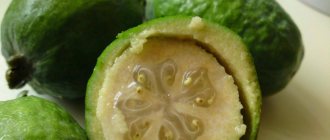Since time immemorial, laurel has been famous for its decorative, healing and culinary properties. In Ancient Greece and Rome, a wreath made from this plant was considered an indispensable attribute of the god Apollo and the Roman emperors. It was a symbol of success and triumph, which was awarded to the winners of military battles and sports competitions. Laurel has become a real decoration of southern gardens and estates, and bay leaves are used in the preparation of many dishes. Although the plant belongs to the genus of subtropical shrubs and trees, the crop is quite unpretentious and can withstand light frosts, which allows it to be grown in summer cottages, as well as indoors.
bay tree
Description of culture
Laurel belongs to the evergreen subtropical plants of the Laurel family. The main habitat of the culture is the coasts of the Mediterranean and Black Seas, Transcaucasia, the Canary Islands, and the Azores. The genus of culture consists of two types - noble and Azorean (Canary) laurel.
There are many popular names for noble laurel - real, Greek, sweet, laurel tree. Decorative cultivation of this plant began in the middle of the 16th century. It is an evergreen tall shrub or tree that can reach 6 m in height. Elongated oval leaves from 4 to 8 cm wide and up to 20 cm long have a matte surface. The fruits are black with a blue or brown tint and reach up to 2 cm in length. When grown indoors, it rarely blooms.
A bay tree can grow up to 6 meters in natural conditions, but it is often grown indoors.
The main habitat of the Azores laurel is the Canary and Azores Islands, where the name of the species comes from. Trees can grow up to 15 m high. Leaves are 6-8 cm wide and up to 15 cm long.
Regardless of the type of crop, the bay leaf has a dark green color and a dense leathery structure. They grow in the shape of an elongated ellipse with wavy edges and a narrow edging of a light shade. The foliage is characterized by a high content of essential oils, the largest amount of which occurs in the 5-6th year of development of the laurel bush or tree.
Important! In spring, about a third of the old leaves of an adult plant may fall off.
The plant blooms once a year - in the second half of spring. The flowers are inconspicuous in appearance, yellow in color, collected in an umbrella-shaped inflorescence. The fruits are small, single-seeded berries of blue-black color.
The plant blooms once a year and has small, dim yellow flowers.
To grow, the plant requires warm weather up to +26°C, bright but diffused sunlight. Laurel tolerates shade well. Exposure to direct rays negatively affects the development of foliage. The crop is unpretentious to growing conditions and can tolerate short-term frosts down to -15°C. The plant is resistant to high humidity and requires abundant watering in summer and minimal watering in winter. At home it can live up to 15 years. For normal development, young seedlings will need to be replanted in the first two years, adult plants - every 4 years. If necessary, formative pruning of branches is carried out in March.
Camphor laurel (tree)
One of the popular varieties of laurel plants that are grown at home or in garden plots is camphor laurel (another name is camphor tree). Strictly speaking, in the scientific classification this plant belongs to the species of the genus Cinnamon. However, its belonging to the Laurel family gives grounds for amateur gardeners to classify the crop as a variety of laurel.
Another representative of the Laurel family is camphor laurel.
The regions of Southeast Asia - Taiwan, southwestern China, some islands of Japan, Korea, and Indonesia - are considered to be the birthplace of camphor laurel. Subsequently, this subtropical evergreen plant spread to many countries with warm, humid climates. In the second half of the 18th century, the camphor tree appeared on the Caucasian coast of the Black Sea. Initially it was grown as an ornamental plant in gardens, parks and estates. In the 19th century, the use of culture for industrial purposes began.
The main beneficial quality of the plant is its essential oil content, more than 90% of which is camphor. This substance has medicinal properties and is used in the manufacture of various medications. Camphor ointments and tinctures are used to cure rheumatism, arthritis, diseases of the heart, blood vessels, and disorders of the central nervous system. The largest amount of camphor is found in the woody parts of the laurel - the trunk and branches. However, essential camphor oils are also contained in the leaves, flowers, and fruits of the plant.
Important! The leaves of the plant are also used as spicy seasonings in the preparation of various dishes.
Camphor laurel is valued for the presence of a large amount of camphor, which is used in medicine and cooking.
The camphor tree is distinguished by its growth rate; it can reach a height of 20-50 m with a massive trunk up to 5 m in diameter. Such plants love warmth and moisture and develop well in subtropical regions. In addition to camphor extraction, they are used to create park and garden decorative compositions and hedges. However, powerful root systems can cause the destruction of various sewer, drainage, and communication systems. In addition, the foliage of the tree contains substances that deteriorate the quality of fresh water in soils and reservoirs.
There are decorative forms of camphor tree that can be grown indoors or in a summer cottage. The technique for growing such a crop is generally similar to the cultivation of noble or Azorean laurel, but requires more fresh air. For propagation, the methods of planting seeds and semi-lignified cuttings or layering are equally successful. The optimal soil composition for camphor laurel is a mixture of two parts turf and one part each of earth, sand, peat, and humus. The plant usually blooms in late May, early summer, and bears fruit in November.
Camphor laurel is often grown for decorative purposes - to create compositions and hedges.
Description of laurel as a species
Laurel (Laurus) is the full name of a popular pot and indoor plant.
In Ancient Greece, laurel was the sacred tree of the god Apollo. This veneration is based on the legend of the nymph Daphne (daphne means “laurel” in ancient Greek), who was transformed into this tree in an attempt to escape the romantic pursuit of Apollo. In order to prove his love, God wove a crown from laurel and never parted with it. Thus the laurel wreath became an emblem of triumph. A wreath of laurel branches was given to the winner of sports games held in the name of Apollo. This symbolism was carried over into Roman culture, where the laurel branch was similarly identified with victory. Such titles as “laureate” and “bachelor” also come from the word laurel. In the Bible, laurel is indicated as a symbol of glory and prosperity.
Laurus nobilis is one of the species of the genus Laurus (Laurus), part of the Laurel family (Lauraceae). The number of species in the genus has not been precisely established; according to some sources there are 3, but the morphological properties of the species are largely similar.
Laurel is native to the Mediterranean, where it grows in a subtropical climate. During times when climatic conditions were wetter, laurel forests covered much of the Mediterranean basin. However, as the climate changed, these areas were populated by the most drought-resistant vegetation, the last laurel forest disappeared about 10 thousand years ago, only its remains remained in the form of small groves in Turkey, Spain, Portugal, Morocco, Syria, Madeira and the Canary Islands. Laurel also grows in Russia, in the southwestern zones of the Krasnodar Territory, and is also widely cultivated in many countries with a subtropical climate.
Laurel grows as a cone-shaped evergreen tree or large shrub, reaching 10-18 meters in height. The leaves are arranged on shoots alternately on small petioles, elliptical, entire-edged, leathery, dark emerald green and shiny on top and whitish below, up to 10-20 centimeters long, have all the known smell.
The plant is dioecious, female and male flowers are formed on different plants, and monoecious specimens are occasionally found. Numerous umbrella-shaped inflorescences are selected mainly at the ends of the shoots. Before flowering begins, they are decorated in spherical wrappers of four elliptical scales. Flowering occurs in spring. The flowers are yellowish and small, male flowers are collected in 6-12 groups, female flowers - in 2-3 groups. At the end of pollination, dark blue oval-shaped drupes about 1 centimeter long are formed on the female plants, which ripen in October-November.
Medicinal properties
Laurel foliage is widely used as a spice, and it also has a stimulating effect. Bay leaf is recommended for use for colic and hysteria, and it also helps stimulate the removal of excess fluid from the human body. The fruits and leaves are also used for flatulence. In alternative medicine, in the presence of localized tumors, an extract of any part of the laurel is used as an anticancer agent. These extracts are also used to care for facial skin tissues. Bay oil is added to ointments used for rheumatic carditis.
Dried leaves are used to make tincture. To do this, crushed leaf plates are poured with forty or seventy percent alcohol in a ratio of 1:5. Seal the bottle tightly and leave it at room temperature for seven days. The filtered product is poured into a bottle and stored in a cool and warm place.
In November-December, the foliage contains the largest amount of essential oils. That is why during this period, experts recommend collecting leaves, which are then used in cooking. Bushes that are 4-5 years old may be suitable for collecting foliage.
General requirements for growing laurel
To grow a laurel tree or bush in an apartment or country house, you can use both shaded and sunny places. In summer, an open balcony or garden plot is suitable. For wintering you can use a glassed-in loggia, a greenhouse, or a well-lit room. In this case, the main condition for the normal development of seedlings is maintaining optimal ambient temperature. During the active growing season - from +18 to +22°, in winter - in the range of 10-12° above zero.
Laurel does not have clearly defined periods of winter dormancy. The intensity of growth is determined by the surrounding temperature conditions and the degree of lighting. However, the plant needs a certain period of rest.
Important! In winter, the laurel can be kept on an insulated balcony; during extreme cold, it can be brought into a well-ventilated room.
A bay tree can cope with slight frosts, but it is better not to leave the plant in the cold.
Usually the plant can withstand short-term frosts down to -10°, cold-resistant varieties - up to -15°, but it is better not to keep seedlings in frozen soil. The crop can be grown in open ground only in areas with a warm climate, with above-zero temperatures throughout the year. In temperate climatic latitudes, a bay tree or bush can be planted in tubs and kept indoors or in a greenhouse in winter. During the period of intensive growth, laurel is most vulnerable to frost, so in the spring you should not rush to take it out into the fresh air.
Simple and useful
Finally, it is worth saying that the bay tree is a magnificent plant that anyone can cultivate in their apartment. It is so unpretentious that even a beginner can cope with its care. But the owner of this tree will always be provided with a very fragrant and beloved spice for making numerous dishes. Bay leaf will give food a special aroma and aftertaste.
Even a beginner can grow a bay leaf at home on a windowsill. The plant has long adapted to indoor conditions and does not require increased care. Laurus nobilis is the official botanical name of a tree or shrub. Its leaves have a spicy aroma and are used in cooking.
The bay leaf was considered a sacred tree by the ancient Greeks. In addition, the plant has bactericidal and calming properties and helps with insomnia. The chemical composition includes useful acids: formic, butyric, acetic, lauric. Biologically active substances relieve fatigue and improve immunity.
Carrying out laurel transplants
The root system of laurel bushes and trees is quite vulnerable to damage. At the same time, the roots gradually grow, and the plant must be replanted periodically. This should be done using the transfer method - carefully remove the laurel from the flowerpot along with clods of earth, then move it to a larger container.
When the roots grow too much, the plant must be carefully transplanted into a larger pot. They do this by transfer method
We can highlight the following requirements for transplanting laurel seedlings at home.
- With normal development, young shoots are replanted once every 2 years. When growth is slow, replanting is done less frequently so that the root system is properly strengthened.
- Plants over 4 years old are replanted every 4 years.
- Before transplanting, water the soil in the flowerpot generously and wait until the water is completely absorbed. This will make it easier to separate the lumps from the walls of the container. Then the plant is carefully removed and laid sideways on oilcloth or fabric.
- The plant is inspected, pebbles stuck in the root plexuses are carefully removed, and damaged roots are cut off. For quick healing, the cut sites are treated with charcoal powder.
If damaged roots are found, you need to cut them off and treat the “wound” with charcoal - The pot into which the crop is moved should be approximately 2-3 cm larger in diameter than the previous container.
- It is necessary to make holes in the bottom of the flowerpot and lay a drainage layer to drain excess water, which will protect the roots from rotting. You can use small pebbles for this.
After all the procedures performed, the plant is planted in a new container. Laurel is unpretentious to soil characteristics, but for better growth you can add humus. A little sand is added to the clay-saturated soil to improve breathability and moisture absorption. On the contrary, you can add a little clay to sandy soil so that water is retained in it longer.
A drainage layer must be placed at the bottom of the pot to prevent root rotting.
The optimal ratio of soil components for growing at home is two parts of turf and one part of sand mixed with humus. In the first year, it is not necessary to fertilize the soil, then you can apply any complex fertilizer 3-4 times during the season. In the year when the plant is not replanted, it is necessary to add soil to the flowerpot and update the soil.
Important! The soil around the laurel bush or tree trunk must be loosened periodically.
How to care for a bay tree
Laurel, like other plants, needs care, and a young tree requires twice as much attention. The bay tree does not like dry air and hot rooms, which can cause the plant to turn yellow or lose its leaves.
For normal development and rapid growth, laurel needs a lot of light; direct sunlight with variable activity should become a reliable companion for the young plant.
In summer, the plant should be taken out into the air, but acclimation to direct sunlight should occur smoothly to avoid possible sunburn. In winter, the bay tree is kept in a room with diffused light at a low temperature.
The optimal temperature regime for bay tree is from +22 to +27 degrees. But during wintering the tree should be kept at a temperature no higher than +12 degrees.
Watering should be carried out at least 3 times a week, and more often in hot weather. In winter, watering is limited and reduced to once a week.
Like any plant, the laurel tree prefers high humidity, so spraying is necessary. An alternative can be a container filled with wet expanded clay, on which a pot with a plant is placed.
Fertilizing is carried out once every 3 months with mineral fertilizers.
Pruning a laurel tree is carried out with the aim of transforming the bush, for decorative purposes. The plant tolerates pruning well.
A laurel tree can be given any shape, but frequent pruning can harm the plant, so the tree should be radically pruned once, and then only maintain the given shape. Frequent pruning can harm the laurel.
The bay tree grows slowly, but as the pot fills with roots, it needs to be replanted. The need for transplantation occurs every two years. The tree prefers non-acidic soil with a neutral PH level.
The laurel is watered to soften the soil and pulled out of the pot along with the soil; a new larger pot is filled with expanded clay drainage, a substrate of turf soil mixed with sand and peat, then the tree is placed and sprinkled with soil on top.
The bay tree is propagated by cuttings, seeds and division.
The cuttings are harvested in the summer; the branches should be mature, flexible, with several internodes, 7-9 cm long.
The prepared cuttings are planted in turf soil to a depth of about 1 cm, and 1.5 cm of sand is added on top and constantly moistened.
The standard temperature for better germination of cuttings is considered to be +17-21 degrees. The planted cuttings will take root in a month to a month and a half, after which they can be transplanted into ordinary pots to a permanent place of growth.
Transplanted cuttings should be sprayed, like mature trees, so that they quickly produce layering and foliage. Feeding is necessary for cuttings; they grow slowly, so to avoid depletion, you should change the top layer of soil to fertile black soil or use mineral fertilizer.
Pruning and crown formation
Typically, pruning of branches and formation of the crown of the plant is carried out in March, if by this time the young shoots have managed to grow. Some gardeners recommend performing this operation in August so that new branches will grow the following spring.
To improve the development of the laurel, old woody branches are cut off by about 20 cm. Below the cut, a sufficient number of buds should remain so that the shoots that grow from them subsequently form a voluminous crown.
Once a year, in March or August, it is worth pruning the plant - this will ensure active growth of the crown
With the help of pruning, laurel crowns can be given a wide variety of decorative shapes - a ball, a cone, a pyramid. This procedure must be started from an early age of seedlings.
Important! To give the desired shape, you need to trim the branches a little, but often.
Planting the top of a pineapple at home
This plant is propagated by seeds and cuttings. The first method is rarely used by amateur gardeners: laurel seeds cannot be stored for a long time, since their germination capacity is quickly lost. Therefore, when buying seeds, the chance of purchasing a low-quality product is very high.
Laurel cuttings are carried out in March , since only in spring the cut cuttings can take root. In summer and autumn, the cuttings do not take root and disappear.
Semi-lignified branches about 10 cm long, which have at least 3 internodes, are suitable for rooting. They are treated with a root growth stimulator and rooted in soil covered with a thick layer of sand.
For successful rooting, it is necessary to cover the cuttings with a glass jar and maintain the temperature at 22-25ºC. Typically, cuttings take root within a month.
Frequency and abundance of watering
In the wild, laurel grows in coastal zones and, accordingly, tolerates high humidity well. The surface of the leaves should be periodically wiped with a damp sponge or cloth. At home, once a month, the plant needs to be hosed down with a stream of warm water under pressure, while covering the soil with polyethylene.
To maintain the required level of humidity, the pot with laurel must have a drainage layer and holes. The container with the plant should be placed in a tray with pebbles and moss at the bottom, which should be regularly moistened.
Laurel loves high humidity, so it is recommended to wipe its leaves with a damp cloth, and also periodically give it a shower
Water the laurel once a day with a moderate volume of settled water at room temperature, in the morning or evening. During dry periods and during hot weather, watering can be done more often. In winter, for the normal development of the crop, it is necessary to maintain the plant's dormancy; increased humidity during this period can disrupt its life cycle, so the frequency and abundance of watering in the winter months should be reduced.
Important! It will be useful for plants to add baking soda to water at the rate of 7 teaspoons per liter.
Rules for planting bay leaves at home
How to grow bay leaves from seeds at home:
- pour soil into the prepared dishes;
- spread the seeds, sprinkle with a 5 cm layer of soil;
- tamp lightly;
- cover with glass, put in the light;
- regularly moisten moderately as it dries.
The germination period of laurel seeds is long – up to six months. Caring for laurel when growing in an apartment is as follows:
- watering with warm, settled water;
- loosening the soil;
- pest control;
- pruning;
- creating conditions for wintering.
You can grow a bay leaf from a twig by cuttings. For this:
- cut a branch no older than 2 years;
- cut with a sharp razor, leaving 3 buds on each cutting;
- the cut should be diagonal;
- the bottom sheet is removed;
- damp sand or soil is poured into the pot, the cutting is buried at a right angle along the lower bud;
- you can powder the sections with a growth stimulator - heteroauxin;
- the cuttings are covered with glass jars, watered if necessary, and ventilated daily;
- if left in the air, then sprinkle with water 3-4 times a day.
Roots form in 2–4 months. Another way to grow a bay leaf is to root a branch with leaves in water, after first soaking the shoot for 3 days in a solution with the root formation stimulator “Epin”.
Growing at home
At home, a shoot from a bay leaf is usually taken of a noble appearance. It interacts well with other indoor plants. It can also be used as a seasoning when preparing soups, dumplings, and main courses.
Note! The aroma of the foliage has a specific smell. Therefore, if you just accidentally tear off a leaf plate or simply rub it, the room will be filled with a familiar bright aroma
Laurel grows well in a room, is unpretentious and does not require much effort to care for, but can die if forgotten about.
Caring for your home laurel
This indoor plant is not very capricious. But, it needs to be constantly sprayed and trimmed so that the crown has a decorative shape. You also need to keep an eye out for pests or diseases to prevent them from developing.
For good growth, laurel does not need a lot of sunlight. It can grow well in partial shade. In summer, when the temperature is more than 25 degrees, the bay bush can be left on the balcony. With proper care, indoor laurel can live for more than 15 years.
To get good growth of indoor noble laurel, it is necessary to create conditions for it that are reminiscent of its native places. With the onset of cold weather, the optimal temperature at which indoor laurel can safely remain is considered to be 18 degrees.
Professionals recommend reducing the temperature to 10 degrees in January. In apartments where central heating is on in winter, it is better to install laurel bushes away from heating radiators.
Watering
In spring and summer, the bush should be watered abundantly, using soft water. The soil mixture in the pot is moistened immediately after its top layer dries. If the room is too hot, then watering can be done twice a day. With the onset of autumn, watering is reduced, and in the winter months it is carried out only when two or three days have passed since the top layer of the substrate has dried.
Spraying
Laurel grows normally and develops only with high air humidity; therefore, it must be regularly moistened with well-settled water from a spray bottle. Experts also advise pouring wet peat or expanded clay into a tray and placing a pot on it, but its bottom should not come into contact with the liquid.
Trimming
When caring for a laurel tree at home, the bush responds well to pruning, forming a lush crown: spherical, cubic, pyramidal.
Laurel pruning is carried out starting from the age of 5 years.
There are two deadlines for this operation: the end of summer (August), immediately after the end of the active growing season, and the end of autumn (October-November), in the transition to a state of dormancy.
In an open area, damaged branches are pruned in early spring.
Transfer
Young, first five years of life, plants are replanted, as a rule, every year, adults - once every 2-3 years, and then even less often.
ATTENTION! The method of replanting should be transshipment, in which the earthen lump is preserved as much as possible, and the new pot is not much, 2-4 centimeters, larger in diameter than the old one
Seed propagation of laurel
When using the seed method of propagating laurel at home, gardeners often encounter certain difficulties. The fact is that the seeds of the crop quickly lose a large percentage of their germination capacity, within 3-5 months. In addition, the high oil content significantly slows down their germination, which can last up to six months. For these reasons, it is necessary to use the freshest possible seeds, and you will have to wait quite a long time for the results of sowing.
Seeds are usually planted in the first months of winter. In order to speed up germination, seeds can be pre-treated with a special solution that stimulates growth. The depth of the planting should be about 1.5 cm. Before this, the soil must be loosened and moistened. Then the soil is covered with plastic film. Containers with planted seeds are kept in regularly ventilated rooms at a temperature of about +18°, the soil is constantly moistened.
You can propagate a bay tree by seed, but you will most likely have to wait a long time for germination - about six months
Important! Every week, the seeds should be carefully removed and inspected to prevent mold from developing. If a white coating is detected, it must be carefully removed and the seed washed with a weak solution of potassium permanganate.
When the shell cracks and the seeds begin to germinate, they must be transplanted into separate flowerpots. The sprouted seed is planted at a soil depth of about 5 cm, the first shoots usually appear a month later. Young sprouts should be protected from direct sunlight and heat.
When propagating by seed in open ground, ripe fruits are collected from laurel bushes and trees and the seeds are extracted from them. This usually happens in late autumn. The collected seed material is planted in the prepared area at a distance of about 8 cm from each other. The planting depth is approximately 5 cm. The first shoots sometimes appear as early as January, but usually these are weak shoots that die quickly. Typically, shoots appear at a constant temperature of about +22° from May to the end of summer.
Some gardeners prefer to grow laurel from seeds directly in open ground, but this is recommended only in regions with warm winters
Pre-sowing preparation of noble laurel seeds
To get the desired result you will need to be patient. Typically, planting material sits in the soil for a long time before it produces a green sprout. If you know how to germinate laurel seeds, this will significantly speed up the emergence of seedlings. The first step is to clean the seed from the pericarp. This shell protects the core from pests and negative environmental influences. The downside is that it inhibits shoot growth (unpeeled seeds take up to 5 months to germinate). This process is also prolonged by the essential oils present in the scales.
To solve the problem, the seeds are prepared before planting the laurel in a pot. In particular, the seed is soaked in warm water, manganese solution or a growth stimulant (Epin or Kornevin). Stimulants have the following effects:
- promote the friendly germination of grains;
- increase the laurel’s resistance to various unfavorable factors - sudden temperature fluctuations, excess or lack of moisture in the soil;
- reduce stress and increase the survival rate of laurel in a new place (for example, after picking);
- stimulate the formation of rhizomes in cuttings.
Such preparations must be used wisely, otherwise they will not benefit the laurel. It is best to follow the recommendations specified in the accompanying instructions. Only a glass, enamel or clay container is suitable for preparing the solution. Usually, to make a solution, 1 g of powder is diluted in 1 liter of water. The resulting composition is thoroughly stirred and immediately used for its intended purpose. Laurel seed is soaked for 20 hours.
Some gardeners practice a different method of germinating planting material. After soaking for not too long, the laurel grains are placed in a plastic cup with coarse sand. To isolate the culture from the external environment, the vessel is covered with cellophane or a piece of glass. Next, it is important to maintain moderate humidity in the sand. The laurel sprout appears after 25–30 days. It is very small and fragile, so it must be handled with extreme care. Every day the cover is removed for 15 - 20 minutes. Ventilation will prevent the seeds from drying out.
Application of vegetative propagation by cuttings and layering
At home, laurel is propagated by cuttings in the first months of spring or in June-July. Cuttings in open areas are carried out only in the first half of summer.
The cutting is cut from a semi-lignified shoot located in the lower or middle part of the laurel bush or tree. The future seedling should have three internodes about 8 cm long. In this case, the bottom leaf must be removed and the rest shortened by half.
The cuttings are planted in moistened sand at an ambient temperature of 16-20°, deepening the seedling by about 1.5 cm. Then the planting is sprayed and covered with plastic film. The cuttings take root and begin to grow within a month. As soon as they grow 2-3 cm, they need to be transplanted into separate containers.
Cuttings usually take root within a month.
Important! Another method of vegetative propagation involves planting layering - lateral shoots with a root system beginning to develop. Such shoots are carefully separated from the laurel, the cut sites are treated with powdered charcoal, then planted in the same way as the cuttings.
Selection of planting material
The plant in question is propagated in several ways: using seeds, cuttings and shoots. The second and third options require less effort and time. However, experts recommend the first method. To successfully grow a crop you need high-quality planting material. Where can I get laurel seeds for planting? The answer is obvious - purchase it in a specialized store. In this case, the grains must meet the following criteria:
- fleshy but thin shell;
- large size;
- seed length within 2 cm;
- oval shape;
- Shelf life is no more than six months (unpeeled laurel seed is stored longer).
The optimal time for planting seeds at home is the end of winter or the first half of spring. If the material is purchased later, it is better to hide it in a cool place for several months. The laurel grains are first sprinkled with sand. It is important that the air humidity in the room is 60%. In such conditions they are stored for 2 - 3 months.
Since laurel seed quickly loses its viability, it is advisable to sow it immediately after purchase.
Calendar of basic work on growing laurel
When growing and caring for laurel in open ground, you can follow this schedule for basic work.
| Season | Recommendations |
| Spring | In March and April, sanitary pruning of bushes and trees is carried out, removing damaged, woody and frozen shoots. Rooting of cuttings is carried out in cool greenhouses. Fertilize plants. |
| Summer | During the entire period, germination of seeds sown in autumn takes place. With this propagation option, it is necessary to regularly feed the soil with nutritional supplements. In June and July, cuttings are planted. August is the time for crown-forming pruning of bushes and trees. |
| Autumn | In October and November, ripened fruits are collected and seeds are sown. At this time, leaves are collected from adult plants for the purpose of preparing culinary or medicinal raw materials, and damaged, diseased shoots are pruned. |
| Winter | During this period, it is necessary to maintain a dormant regime, moderate the frequency and abundance of watering, and keep the plants in cool, bright, well-ventilated areas. |
In autumn and winter, the plant is disturbed minimally, since it is in a dormant state.
Such seasonal work is carried out at home.
| Season | Recommendations |
| Spring | The seeds are sown in March. In the first two months, propagation is carried out by vegetative methods by planting cuttings or layering. Regularly feed the soil. |
| Summer | During the entire period, seeds germinate and regular fertilizing is carried out. At the end of summer, formative pruning is performed. |
| Autumn | October and November are the time to collect fruits and raw materials from leaves. Feeding is rare. |
| Winter | The first two months are a rest period. In February, seeds can also be sown. |
In spring and summer, the plant needs to be periodically fed, watered, and pruned.
The plantings are regularly watered throughout the year. In summer, plants are watered more often and more abundantly. In winter, the intensity and volume of watering should be reduced.
Possible problems when growing and caring for laurel
Beginning gardeners need to prepare in advance to overcome a number of problems that may arise in the process of growing laurel at home or in a summer cottage. For example, the following reasons can lead to drying out of laurel trees and bushes:
- low humidity in planting areas during the period of active growth of laurel;
- improper irrigation during the winter or growing season;
- excess moisture in the root system, which leads to rotting of the roots, spots on the leaves, and yellowing of the foliage;
- non-compliance with temperature conditions, sudden temperature changes.
If watering is improper, or insufficient or excessive humidity, the plant may begin to hurt.
Important! In addition to errors in caring for the plant, some insect pests, dangerous airborne diseases and various parasites pose a threat to the health of the laurel.
Shields
Insects are white, sometimes with a yellowish tint. They are distinguished by the presence of a shield-like shell, from which they got their name. They settle on the surface of foliage and feed on plant juices. As a result of the influence of pests, white or yellow spots form on the leaves, which gradually cover the entire leaf. Then the foliage dries out, curls and dies. Insects multiply quickly and spread to all nearby plants, so it is important to immediately isolate the infected bush or tree from neighboring vegetation.
The dense shell protects the scale insect from exposure to insecticides, which makes it difficult to combat the pest. The surest way to get rid of insects is to collect them from the surface of the leaves by hand. The areas affected by the pest should be treated with Ankara or a tincture of vodka and garlic. A solution of a liter of water, 15 ml of liquid soap and 10 ml of alcohol is also suitable for pest control. This composition should be used to wipe the surface of the leaves.
Important! When scale insects appear, it is also necessary to change the top layer of soil near the plant, where insect larvae may be located.
Scale insects are dangerous for the plant: they feed on its sap, causing spots to appear on the leaves
Spider mites
Small insects that are difficult to notice with the naked eye. A sign of pest influence is the appearance of cobwebs and white plaque on the soil, surface of leaves, and plant branches.
To protect the laurel from mites, treat the crop with a weak solution of potassium permanganate diluted with water. Infected plants are treated with insecticidal preparations. The surface of the leaves and branches is also wiped with a soap solution, followed by rinsing the plant with clean water.
A sign of the appearance of such a pest is the appearance of small cobwebs and plaque on the plant and soil. You can get rid of it using potassium permanganate
Sooty fungus
Fungal spores are carried both by insects and through the air. A symptom of the disease is the appearance of dark spots resembling soot on the surface of the leaves. The fungus leads not only to damage to the appearance of the plant, but also to its death. To combat the disease, various fungicides are used, the most effective of which is Bordeaux mixture.
Sooty fungus
Healing properties of the plant
Laurel trees and shrubs have a number of healing properties. The foliage releases substances that reduce the content of staphylococcus bacteria and fungal spores in the air. This quality helps normalize the cardiovascular and respiratory systems, blood circulation in the brain, and relieve mental fatigue. In pharmacology and folk medicine, in the production of raw materials for medicines, in addition to leaves, the bark, fruits, and seeds of the plant are used. Various preparations based on laurel are used to relieve nervous excitability and fatigue, cure paralysis of the facial nerve, colic, inflammation of the liver, spleen, and joint pain.
Bay leaf infusions help get rid of pathologies of the bladder, uterus, and hearing organs. Decoctions of seeds and bark cure cholecystitis and urolithiasis. Oil extracted from the leaves reduces pain during childbirth and cramps.
Using bay leaves in cooking can increase appetite, improve digestion, and lower blood pressure. Thanks to the presence of tannins, tinctures and ointments based on laurel relieve swelling, inflammation, and reduce pain from rheumatism, arthritis, bruises, and sprains.
Various medicines made using laurel help against many diseases.
The substances contained in the plant serve as good natural antibiotics and have antifungal and disinfectant properties. They can slow down the development of tuberculosis, activate metabolic processes, help fight many diseases and strengthen the immune system.
Important! Bay decoction is an effective remedy that allows the body to quickly recover from serious illnesses.
Tinctures from leaves, flowers, and fruits of laurel are used as diaphoretics, help in curing fever, stomatitis, and remove gallstones, salts, and toxic substances from the body. The insecticidal properties of the plant components are used in the production of medicinal ointments and antibacterial soap. Bay decoction is useful for patients with diabetes. Taking this remedy for three weeks will significantly reduce blood sugar and normalize the general condition of the body.
Bay laurel is used to create antibacterial soap
Medicinal properties of laurel
Bay leaves are often used as a spice when preparing various dishes. However, in addition to being used in cooking, bay leaves have a number of beneficial properties for the human body. The most famous qualities include the following:
- improves digestion, used to stimulate appetite;
- accelerates metabolic processes in the body;
- increases immunity against infectious diseases;
- removes salt and heavy metals from the body;
- has an analgesic effect;
- used as a decongestant;
- restores blood vessels, reducing their fragility;
- used for inhalation during respiratory diseases;
- normalizes blood pressure.
Also, bay tree leaves are used to treat problem skin, as well as to strengthen hair and nails.
Use of laurel in cooking
Thanks to its special aroma and taste, bay leaf has become one of the most sought-after spices in the world. It is an essential ingredient in most soups, broths, porridges, gravies, sauces, pickles and marinades. The spice is used in preparing dishes from vegetables, cereals, fish, meat, and also as a component of various seasonings.
Dried laurel leaves are mainly used in cooking. However, there are many recipes that use fresh leaves and seeds of the crop. The essential oils contained in laurel are also used in confectionery production and the production of alcoholic beverages.
Important! Most canned vegetables such as tomatoes, cucumbers, zucchini, eggplants, squash, peppers, and various cabbage, carrot, and onion salads cannot do without bay leaves.
To impart a unique aroma and unique taste, dried laurel leaves must be added at the final stage of cooking, otherwise the seasoning will make the dish too bitter and spoil its taste. You can put the leaves in freshly prepared food, leave them for a while, then remove the spice. This method will also give the dish an appetizing smell and improve its taste.
Bay leaf is a fairly popular spice that is used in preparing various dishes.
Selection and storage of bay leaves
One of the advantages of laurel is that it is equally useful both fresh and dried. For medicinal or culinary purposes, you can use leaves freshly picked from a home-grown bush or tree, or dry them into preparations that will then be stored for a long time.
Important! At the same time, dried leaves also contain essential oils and have disinfectant, antibacterial and medicinal properties.
When choosing bay leaves, you need to carefully examine their surface. There should be no stains or any plaque on them. The maximum amount of oils and nutrients is contained in the foliage of adult plants that have reached the age of 4-5 years, therefore it is from such leaves that it is better to dry preparations for seasonings or medicinal tinctures, ointments, and decoctions. To do this, carefully cut branches with leaves from the laurel and dry them in a dark place for 10 days. Then the leaves are separated and transferred to a separate container.
You can use both fresh and dried bay leaves
Dried leaf material should be stored in airtight containers. To do this, you can use glass jars with tight-fitting lids. It is better to keep transparent containers in a dark place. Typically, the shelf life of dry bay leaves is one year, but as long as the packaging is kept sealed, the bay can be stored longer. However, it must be taken into account that over time the taste of such a seasoning deteriorates and the leaf begins to taste bitter in dishes.











